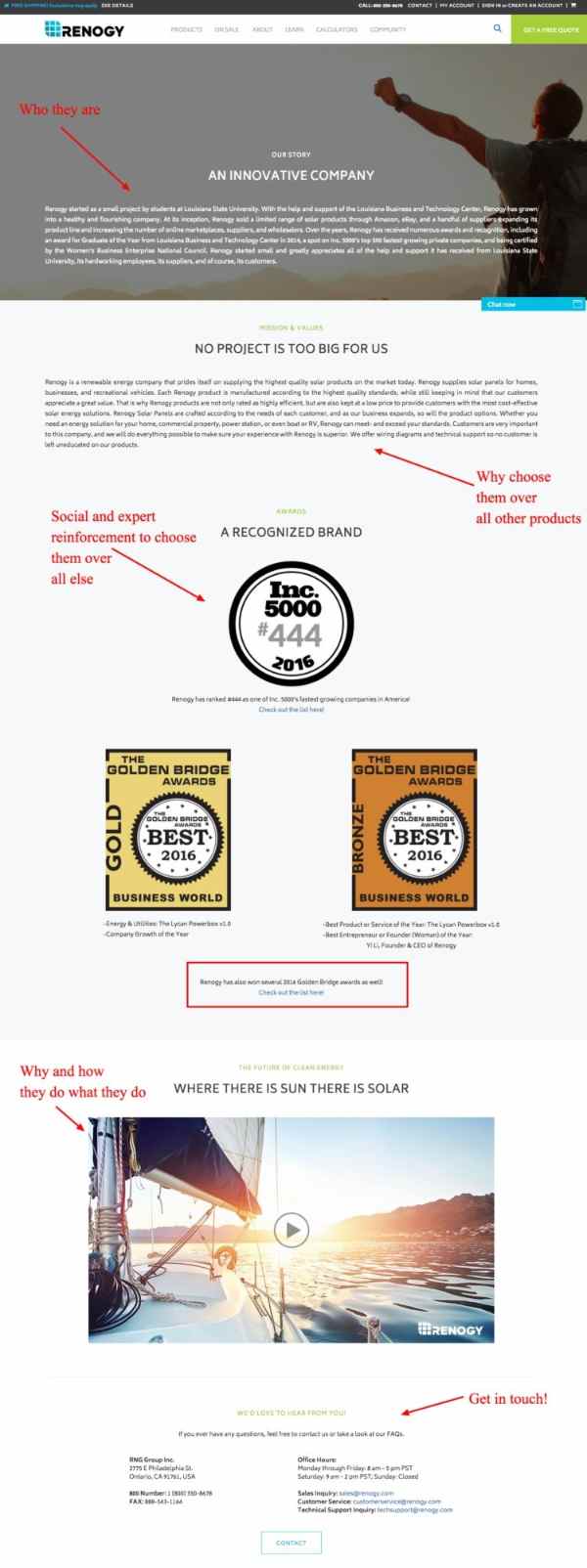Statista states that more than 40% of Internet users across the world prefer buying products from an e-commerce site/store. People prefer online shopping for a more comfortable customer experience. The number of people searching for online stores is on a constant rise. Have a look at e-commerce sales across the world:
 Image source – e-commerce CEO
Image source – e-commerce CEO
The graph clearly shows that online retail is booming. Day-by-day, the number of e-commerce players is raising. So, you need to create a strong online brand for your startup e-commerce business.
Branding doesn’t mean a logo, your business name, and a meaningless press release. It is more than a strategy which is planned and executed. You can’t see it but feel it.
Consider about the organizations you have ever interacted with.
- What are the reasons that Apple products make you feel delighted and reduce your stress?
- What does make you feel relaxed about the value of money when you buy something of your favorite companies?
You know it is branding. It is the business, which is mixed with engagement, emotion, and expectations. Also, it is a mixture of customer participation and mission. It consists of your web presence on the Internet, quality of products, and communications with customers. It is baked into your patron emails, product details, and checkout of the shopping cart page. In simple words, branding is an afterthought of your business success.
It is clear here that you need to win the heart of your patrons and stand apart from the crowd to beat the market competition. Here are some useful e-commerce marketing strategies that can help you build a strong online brand for your startup:
Serve your customers in a better way
Always keep in mind for whom your business is. Recalling the wants and requirements of your patrons will direct your actions and guide you on the path of success. You need to know your audience. For this, you can look for trends in analytics. By conducting an in-depth study of analytics, you can see an overview of your e-commerce store data that can include the most popular products, abandoned cart data, and purchase funnel. Going through such data will help you personalize your consumers’ experience. And with personalization, you will be able to serve your patrons well. For customization, you can leave personal messages or discount offers in the forms of custom labels to make your customers recall the sale or offer, which is going at your online store. You can take help of professional services like iCustomLabel and create customized messages for your targeted users. With this, you can encourage them to shop from your e-store. You can place a label like this one in the packaging of a product before shipping it to patrons.
 Source- http://1.bp.blogspot.com/-QsTINw2rZNk/VBexOltS9xI/AAAAAAAAAmQ/WruuZVqZkdo/s1600/Macys-coupons.gif
Source- http://1.bp.blogspot.com/-QsTINw2rZNk/VBexOltS9xI/AAAAAAAAAmQ/WruuZVqZkdo/s1600/Macys-coupons.gif
Share your story
People have been listening to stories from the advancement of human civilization. Through storytelling, they have a better connection with others.
So, you must start telling stories to your probable customers. Your way of telling stories should have the capability of building trust with potential patrons. In the story, you should mention why you have started this business and why you are in this business. Your story can include what you care about and what you stand for, apart from who you are.
Your story should be like this one.

Optimize your e-commerce site for search engines
For having a strong online brand, you need to be before your customers looking for the products you are offering. It means you need to make your e-commerce store friendly to search engines. You need to do it, as SEO is the standard way of establishing a startup as a brand. Your SEO strategy should include:
- Keyword research to find the most suitable and relevant business phrases
- Content creation based on the selected keywords
- Creating links to power your pages
- Distribution of your curated content
Use email marketing and automate it
 Optinmonster states that 91% of people go through their email every day. It means using email marketing can be fruitful for you in making your e-commerce site a brand among masses. This medium of digital marketing helps businesses to have a 3800% ROI. A study of Optinmonster says that the average order value of email marketing is three times higher in comparison with social networking sites. So, get into the habit of using email marketing to promote your e-commerce business. You can use a tool like ChimpMail to automate and personalize your email. Send emails for appreciating your customers and informing their abandoned cart, sale, and offer on social occasions and holidays.
Optinmonster states that 91% of people go through their email every day. It means using email marketing can be fruitful for you in making your e-commerce site a brand among masses. This medium of digital marketing helps businesses to have a 3800% ROI. A study of Optinmonster says that the average order value of email marketing is three times higher in comparison with social networking sites. So, get into the habit of using email marketing to promote your e-commerce business. You can use a tool like ChimpMail to automate and personalize your email. Send emails for appreciating your customers and informing their abandoned cart, sale, and offer on social occasions and holidays.
Select social media platforms wisely
Visiture states that social media is the most cost-efficient and effective ways to convert an e-commerce startup into a brand. Many of you get trapped in an extensive range of social networking sites. You need to choose the most suitable one for your e-store. With the support of Buffer, you can automate your social media posts and keep your channels updated.
Run PPC campaigns for instant results
For faster results, you should opt for PPC – Pay-per-click. It is expensive. However, you should apply it to get instant traffic to your e-commerce site. Apply it when you think your e-store needs a boost in your e-commerce sales.
Study Google Analytics and take appropriate steps
For converting your e-commerce startup into a brand, you must have a close eye on Google analytics. Study analytics to learn what strategies have worked and what have not. With the in-depth analysis, you will be aware of what steps you should take for better results.
Conclusion
Creating a brand for your e-commerce business is an art. You can achieve it when you win the heart of your customers by serving them well with what they are looking for. In the beginning, you can have issues. However, you will gradually be successful in converting your e-commerce store into a popular brand.
Smith Willas is a freelance writer, blogger, and digital media journalist. He has a management degree in Supply Chain & Operations Management and Marketing and boasts a wide-ranging background in digital media. You can follow him on Twitter.
E-commerce stock photo by Antonio Guillem/Shutterstock







